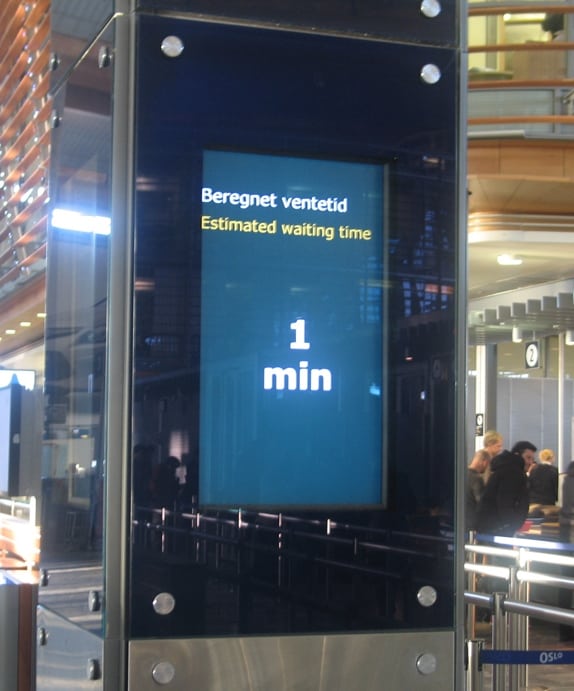A passenger tracking system from from Amor Group allows airports to better manage flows of people before they board the aircraft.
 BluFi, the Glasgow, Scotland-based Amor Group’s airport passenger tracking system, combines Bluetooth and Wi-Fi to track airport passengers movement through airport terminals. The system, delivered by partner company BlipSystems, allows terminal operators to track a sample of up to 50 percent of passengers entering the airport. The BluFi system works as an integrated element of Chroma Airport Collaboration Database and requires blipnodes — hardware boxes roughly the size of standard routers developed by Amor Group partner BlipSystems — to be deployed in each area that is to be monitored throughout the airport.
BluFi, the Glasgow, Scotland-based Amor Group’s airport passenger tracking system, combines Bluetooth and Wi-Fi to track airport passengers movement through airport terminals. The system, delivered by partner company BlipSystems, allows terminal operators to track a sample of up to 50 percent of passengers entering the airport. The BluFi system works as an integrated element of Chroma Airport Collaboration Database and requires blipnodes — hardware boxes roughly the size of standard routers developed by Amor Group partner BlipSystems — to be deployed in each area that is to be monitored throughout the airport.
“When a passenger passes through an area with a sensor, the BlipNode records a portion of the unique ID from their device, along with a time stamp,” said said Alaistair Deacon, chief aviation technologist for the Amor Group. “It does not capture personal information and is completely anonymous. This data is only held for a 24-hour period and complies with the recognized standards for privacy and data protection.”
The market for BluFi varies by region because of the way airports are typically managed in each region. “In Europe and the Middle East this technology is primarily utilized by the airport operator as they are the key stakeholder responsible for terminal operations. Within the U.S. market, this technology can be utilized by both the Airport Operator and the airlines as terminal operations and the passenger process can be owned by different stakeholders across different airports,” said Deacon.
The cost of BluFi is dependant on the size and scale of the implementation and the system does not require FAA or EASA approval as it does not interfere with any other technology deployed at airports, the Amor Group said.
According to Amor, there is currently one airport that has an operational BluFi system, two U.S. airports are implementing pilot programs, and more than 30 airports are running Bluetooth-only systems.